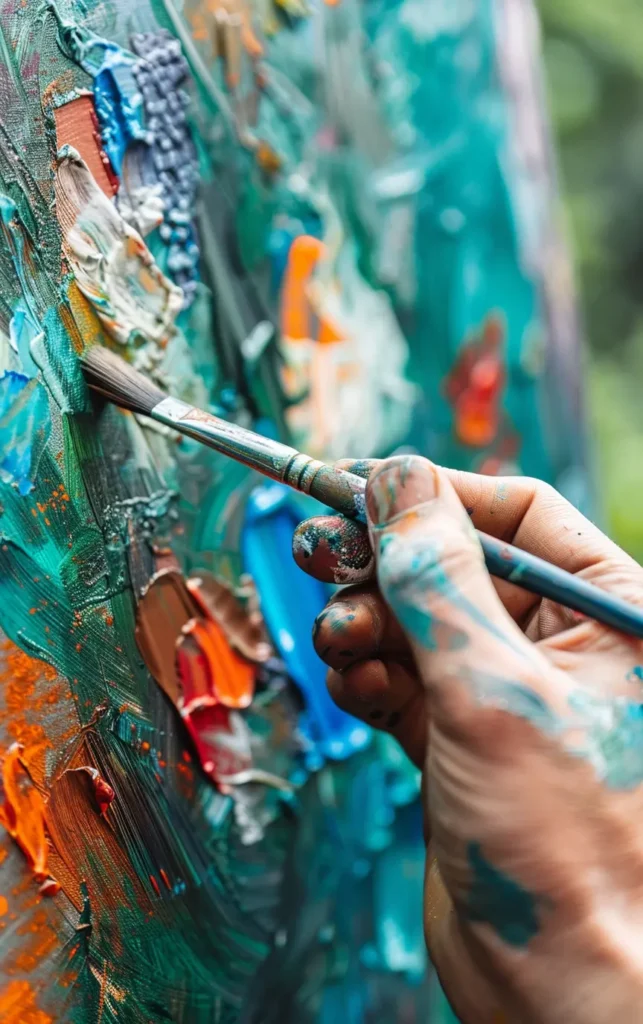Understanding The Benefits of Art Therapy For Addiction
Leveraging Premier Behavioral and Mental Health Interventions For Substance Use Disorder Treatment
Get Help Today
Recovery interventions aren’t just for therapists and clinicians—YOU are the critical component to true healing. Your well-being is the goal of treatment, and your improved quality of life is the desired outcome. Art Therapy allows you to take a hands-on approach to your treatment and pursue creative outlets in a guided setting. Here, you can discover and process internal thoughts, strong and deep emotions, past or traumatic experiences, and behavior patterns by engaging in the creative process.
Substance use disorder and co-occurring mental health issues demand an integrated, holistic strategy to achieve the best possible outcome. Crestone Wellness inpatient detox and rehab offers a unique individualized approach to treatment that promotes healing, abundance, and joy throughout the recovery process.
What is Art Therapy For Addiction?
Art Therapy is an alternative intervention that compliments traditional modalities for substance use and mental health treatment. It’s been proven beneficial in addressing a range of disorders, both mental and physical, including:[1]
- Stress
- Anxiety
- Depression
- Mood disorders
- Trauma
- Grief
- Chronic pain
- Other physical illnesses (cancer, aging, etc.)
Art Therapy sessions can be conducted in both private and group settings and typically take place weekly for several weeks during residential detox and rehab. Patients work directly with a licensed therapist or clinician trained in the application and benefits of art therapy. This will be an opportunity for you to explore and process thoughts, emotional responses, experiences, and harmful behavior patterns in a safe and guided environment.
At Crestone Wellness, we approach addiction treatment with specialized care that emphasizes respect and fosters joy. Our clinical team will walk alongside you every step of the way and help you uncover and face the challenges within.
How (and Why) Art Therapy For Addiction Works
Art Therapy is an alternative, non-confrontational approach to healing and recovery that employs creative tools, processes, and activities to empower personal discovery and shift perspectives. These activities span a wide range and may include:[2]
- Visual Arts: Anything from drawing and painting to pottery and sculpting.
- Writing: Capturing thoughts and feelings in the written word through journaling or poetry.
- Music: Listening to hand-selected pieces, creating music, or performing it in private and group settings.
- Creative Movement: Yoga, pilates, dance, and drama are examples of guided movement activities.
With the help of a professional, Art Therapy helps to reframe past experiences, change your perception of specific personal experiences, organize your thoughts in a positive way, gain valuable personal insights that were otherwise buried, and enhance brain function and flexibility.[3]
All wellness-focused treatment programs at Crestone Wellness (including co-occurring disorders and alcohol and drug addiction) are designed to promote effective, personalized treatment that helps you cultivate healing and 360-degree growth. This is where your path to success and restoration begins.
Substance Abuse Therapies
Efficacy of Art Therapy For Addiction
The benefits of Art Therapy extend beyond treatment outcomes into self-care and improved quality of life by offering new opportunities to relax and renew body, mind, and soul. Specifically for substance use disorder treatment, Art Therapy has been revealed to decrease denial, reduce treatment opposition, open positive communication channels, and reduce shame— all of which are critical for the addiction recovery process.[4] Inpatient treatment programs, like those at Crestone Wellness, are uniquely suited to art therapy techniques as they offer elevated focus, serenity, and a distraction-free environment.

What to Expect from Art Therapy For Addiction
Each patient’s private sessions will be tailored to their needs, but in most cases, the structure and flow of a session within our Art Therapy program will look something like this:[5]
Goal planning:
The Art Therapist will review goals for each session to set intentions.
Choosing the materials:
For most sessions, you get to choose the artistic medium.
Creative process:
Based on the Art Therapist’s instructions, you will get to work.
Observation:
The therapist will observe your creative process.
Collaboration:
Together, you will discuss the results of your efforts.
Feedback:
Based on their expertise and your needs, the therapist will give feedback on your art.
Ongoing treatment goals:
Now is the time to summarize what occurred, set future goals, and assign any homework, if applicable.
Art Therapy For Addiction At Crestone Wellness
Substance abuse is exceptionally common, but each patient’s experience dealing with it will be unique. We exist to highlight the unseen and reveal the path forward to healing. Every patient we serve at our substance abuse treatment center will receive a fully individualized treatment plan designed to meet their unique needs.
Before treatment ever begins, you will undergo a comprehensive, 360-degree assessment to discover what modalities and therapies will work best for you. We want this to be a positive, effective experience that you remember with joy and gratitude.
Our Austin-area facility has been designed with state-of-the-art amenities in a safe, serene, and supportive environment. This is where you will find so much more than treatment, but also comfort, community, and solutions. We facilitate sustainable healing, sobriety, and holistic wellness through evidence-based treatment, mindfulness, yoga, balance, and more. Welcome To Crestone Wellness!
Frequently Asked Questions about Art Therapy For Addictions
How can art be used as therapy?
Art is, by nature, introspective, reflective, and expressive. These are powerful tools in the mental health and substance use disorder space.
What Are the Benefits of Art Therapy for Drug Addiction?
According to multiple medical studies, Art Therapy has been shown to open positive communication channels, decrease denial, reduce treatment opposition, and reduce shame.[6] In the treatment process, these benefits are invaluable.
Can art therapy be effective for treating opioid addiction?
While it has been proven beneficial for a range of disorders, including substance use disorders, the best way to determine what is effective for you is to consult a treatment professional and receive a comprehensive assessment.
Sources
[1][2]Stuckey, H. L., & Nobel, J. (2010). The connection between art, healing, and public health: A review of current literature. American Journal of Public Health, 100(2), 254–263. Retrieved from https://www.ncbi.nlm.nih.gov/pmc/articles/PMC2804629/
[3]Konopka, L. M. (2014). Where art meets neuroscience: A new horizon of art therapy. Croatian Medical Journal, 55(1), 73–74. Retrieved from https://www.ncbi.nlm.nih.gov/pmc/articles/PMC3944420/
[4]Aletraris, L., Paino, M., Edmond, M. B., Roman, P. M., & Bride, B. E. (n.d.). The use of art and music therapy in substance abuse treatment programs. Substance Abuse Treatment, Prevention, and Policy. Retrieved from https://www.ncbi.nlm.nih.gov/pmc/articles/PMC4268880/
[5][6]Pénzes, I., van Hooren, S., Dokter, D., & Hutschemaekers, G. (n.d.). How art therapists observe mental health using formal elements in art products: Structure and variation as indicators for balance and adaptability. Frontiers in Psychology. Retrieved from https://www.ncbi.nlm.nih.gov/pmc/articles/PMC6143814/




